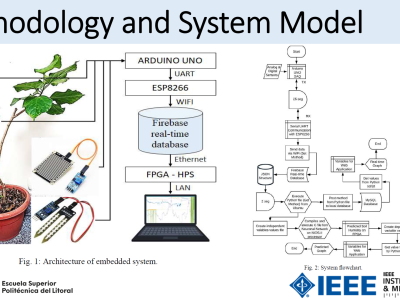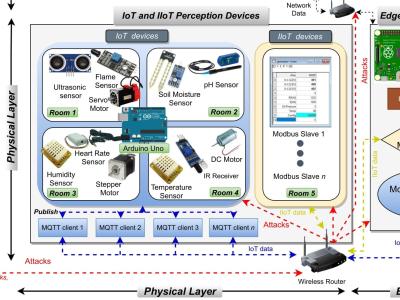The FLAME dataset: Aerial Imagery Pile burn detection using drones (UAVs)

- Citation Author(s):
-
Fatemeh Afghah (Northern Arizona University)Abolfazl Razi (Northern Arizona University)Liming Zheng (Northern Arizona University)Peter Fulé (Northern Arizona University)Erik Blasch (Air Force Research Laboratory)
- Submitted by:
- Alireza Shamsoshoara
- Last updated:
- DOI:
- 10.21227/qad6-r683
- Data Format:
- Links:
 57564 views
57564 views
- Categories:
- Keywords:
Abstract
Wildfires are one of the deadliest and dangerous natural disasters in the world. Wildfires burn millions of forests and they put many lives of humans and animals in danger. Predicting fire behavior can help firefighters to have better fire management and scheduling for future incidents and also it reduces the life risks for the firefighters. Recent advance in aerial images shows that they can be beneficial in wildfire studies. Among different methods and technologies for aerial images, Unmanned Aerial Vehicles (UAVs) and drones are beneficial to collect information regarding the fire. This study provides an aerial imagery FLAME (Fire Luminosity Airborne-based Machine learning Evaluation) dataset using drones during a prescribed pile burn in Northern Arizona, USA. This dataset consists of different repositories including raw aerial videos recorded by drones' cameras and also raw heatmap footage recorded by an infrared thermal camera. To help researchers, two well-known studies; fire classification and fire segmentation are defined based on the dataset. For approaches such as Neural Networks (NNs) and fire classification, 39,375 frames are labeled ("Fire" vs "Non-Fire") for the training phase. Also, another 8,617 frames are labeled for the test data. 2,003 frames are considered for the fire segmentation and regarding that, 2,003 masks are generated for the purpose of Ground Truth data with pixel-wise annotation.
The published article is available here:
https://www.sciencedirect.com/science/article/pii/S1389128621001201
The preprint article of this dataset is available here:
https://arxiv.org/pdf/2012.14036.pdf
More information about this study and the two machine learning challenges that we used is available here:
A sample video is available on YouTube:
https://www.youtube.com/watch?v=bHK6g37_KyA
To find other projects and articles in our group:
Instructions:
The aerial pile burn detection dataset consists of different repositories. The first one is a raw video recorded using the Zenmuse X4S camera. The format of this file is MP4. The duration of the video is 966 seconds with a Frame Per Second (FPS) of 29. The size of this repository is 1.2 GB. The first video was used for the "Fire-vs-NoFire" image classification problem (training/validation dataset). The second one is a raw video recorded using the Zenmuse X4S camera. The duration of the video is 966 seconds with a Frame Per Second (FPS) of 29. The size of this repository is 503 MB. This video shows the behavior of one pile from the start of burning. The resolution of these two videos is 1280x720.
The third video is 89 seconds of heatmap footage of WhiteHot from the thermal camera. The size of this repository is 45 MB. The fourth one is 305 seconds of GreentHot heatmap with a size of 153 MB. The fifth repository is 25 mins of fusion heatmap with a size of 2.83 GB. All these three thermal videos are recorded by the FLIR Vue Pro R thermal camera with an FPS of 30 and a resolution of 640x512. The format of all these videos is MOV.
The sixth video is 17 mins long from the DJI Phantom 3 camera. This footage is used for the purpose of the "Fire-vs-NoFire" image classification problem (test dataset). The FPS is 30, the size is 32 GB, the resolution is 3840x2160, and the format is MOV.
The seventh repository is 39,375 frames that resized to 254x254 for the "Fire-vs-NoFire" image classification problem (Training/Validation dataset). The size of this repository is 1.3 GB and the format is JPEG.
The eighth repository is 8,617 frames that resized to 254x254 for the "Fire-vs-NoFire" image classification problem (Test dataset). The size of this repository is 301 MB and the format is JPEG.
The ninth repository is 2,003 fire frames with a resolution of 3480x2160 for the fire segmentation problem (Train/Val/Test dataset). The size of this repository is 5.3 GB and the format is JPEG.
The last repository is 2,003 ground truth mask frames regarding the fire segmentation problem. The resolution of each mask is 3480x2160. The size of this repository is 23.4 MB.
The published article is available here:
https://www.sciencedirect.com/science/article/pii/S1389128621001201
The preprint article of this dataset is available here:
https://arxiv.org/pdf/2012.14036.pdf
For more information please find the Table at:
To find other projects and articles in our group:
Dataset Files
- 1) Raw video from Zenmuse X4S cameras (Size: 1.14 GB)
- 2) Raw video from Zenmuse X4S cameras for one specific pile (Size: 479.79 MB)
- 3) Raw video from FLIR Vue pro R (Size: 43.35 MB)
- 4-GreenHot.mov (Size: 146.49 MB)
- 5-Thermal_Fusion.mov (Size: 2.83 GB)
- 4) Raw video from FLIR Vue pro R (Size: 32.56 GB)
- Training.zip (Size: 1.18 GB)
- Test.zip (Size: 287.58 MB)
- 5) Raw video from FLIR Vue pro R (Size: 4.98 GB)
- Masks.zip (Size: 9.12 MB)








In reply to Please where can i find the by Aicha KHALFAOUI
In reply to 我也想问这个问题,请问你找到了吗 by yu bai
In reply to 我也想问这个问题,请问你找到了吗 by yu bai
In reply to Please where can i find the by yu bai
Have you find it? Please let me know if you find it
In reply to Why are the Masks annotations by Shipei liu
In reply to me too. Why ? by jiajun li
In reply to Did you get the masks? Im by Pedro Silva
thank you !
great!
太感谢了